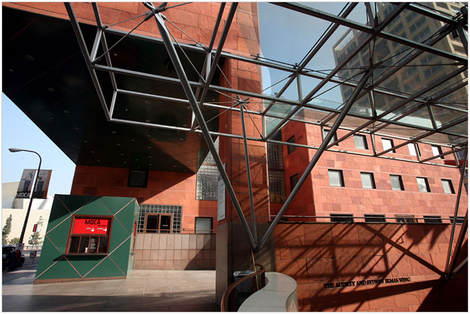What MOCA really needs
L.A. city officials need to step in; replacing the museum's board and top executives would be a good first step.
By Tim Rutten, The Los Angeles Times
The Museum of Contemporary Art is more than a civic cultural treasure. Along with its Grand Avenue neighbor—the Los Angeles Philharmonic under the brilliant Esa-Pekka Salonen—it has become one of the essential windows on the restless, searching, cosmopolitan creativity of this city's 21st century spirit.
That's why the financial collapse that currently threatens to engulf and destroy—or irrevocably alter—MOCA is, even in these desperate times, a problem that requires immediate attention from Los Angeles' elected officials. The city has a strong interest in the museum. Though its governing board is made up of private individuals, and private philanthropy has provided its endowment, the city has played a crucial role in MOCA since its inception 30 years ago....
READ ON at latimes.com
Here’s How to Rescue a Museum at the Brink
By Roberta Smith, The New York Times
The first thing to be said about the fiscal crisis facing the Museum of Contemporary Art in Los Angeles, horrendous as it is, is that it could be a lot worse. The museum regularly overran its budget and dipped into its endowment to cover operating costs, which is scandalously irresponsible.

Monica Almeida, The exterior of the financially struggling Museum of Contemporary Art in Los Angeles.
But let’s keep some perspective. The museum needs to raise roughly $25 million and embrace a new strategy to stabilize itself. And it can do it.
This institution has to be born again, wrestled into a new phase of its marvelous history by the people who brought it into being in the first place, with help from the rest of the art world....
READ ON at nytimes.com
______________________



My memory of MOCA was as a tourist.
We made the trip downdown and went to MOCA and found that ONE room was open as the rest was restricted to MOCA "members". We had thought it was a big museum .
Accross the road the concert hall could be looked at but not entered.
The spirit of culture/enterprise we reckoned had left America.
Posted by: Louis | Wednesday, 10 December 2008 at 05:10 AM
Whether we're talking about the federal government, mortgage companies, churches, unions, or art museums, the concept of financial responsibility and accountability is continually raised as if it's some new idea. For the majority of us who work hard, pay our bills on time, and most importantly, live within our means, financial responsibility is nothing new or innovative. It's just the right way to live. These principles that guide the management of personal finances shouldn't change when one goes to the office.
Posted by: John Roberts | Wednesday, 10 December 2008 at 06:14 AM
A few years ago (before they built the huge building across the street) I used to work a few buildings down. I would go there for lunch a couple of times a week. I think on Fridays they had a live Jazz band...oh, those were the days ;-)
Posted by: ShadZee | Wednesday, 10 December 2008 at 12:06 PM
I'm ambivalent. On the one hand, I'm not fully supportive of propping up institutions that aren't financially viable but then this is clearly irresponsible management and I get all hot under the collar with feelings that someone should be held to account.
How does one limit the damage of financial & managerial incompetence (I don't think for a minute that they can be prevented)? And should a different solution be applied to benevolent institutions like this than for public (i.e. for profit) ones?
It's a hard choice but I do hope in this case they can find their way out of trouble (and hopefully others learn from the example).
Posted by: Martin Doonan | Thursday, 11 December 2008 at 11:50 AM